#BlackHistory
Text

#malcolmx#malcomx#africanamerican#blacklivesmatter#blackpanther#love#blackexcellence#blackpower#blackbusiness#blackhistory
279 notes
·
View notes
Text

Today In History
Playwright August Wilson is one of the most important voices in modern theater. He has won acclaim from literary and theater critics for his plays, which portray the African American experience in the twentieth century, one decade at a time.
Wilson won Pulitzer Prizes for two of them: Fences (1987), and The Piano Lesson on this date April 17, 1990.
He grew up in Pittsburgh’s Hill District, where he was surrounded by the sounds, sights and struggles of urban African American life that would later fuel his creative efforts. But Wilson’s appreciation for the culture in which he had grown up did not bloom fully until he moved to St. Paul, Minnesota, in his early thirties. From that distance, he gained an appreciation of the richness of the culture and the language of the place where he had spent his youth.
“In the Hill District, I was surrounded by all this highly charged, poetic vernacular which was so much part and parcel of life that I didn’t pay any attention to it. But in moving to St. Paul and suddenly being removed from that environment and that language, I began to hear it for the first time and recognize its value,” he says.
CARTER™️ Magazine
#august wilson#carter magazine#carter#historyandhiphop365#wherehistoryandhiphopmeet#history#cartermagazine#today in history#staywoke#blackhistory#blackhistorymonth
37 notes
·
View notes
Text
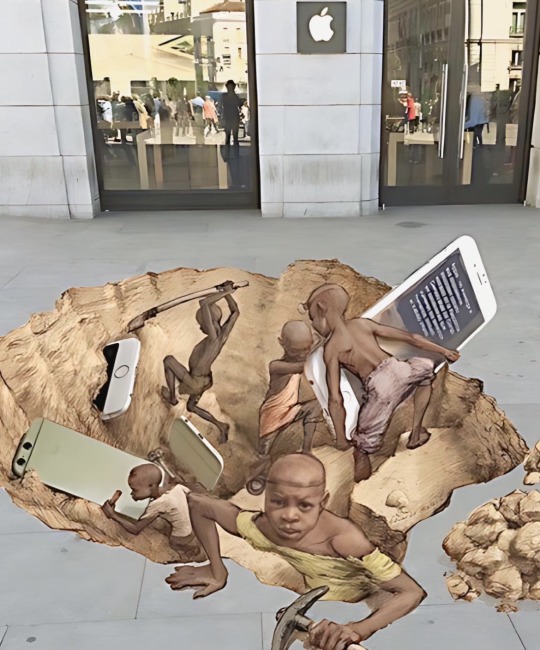
Congo is silently going through a silent genocide. Millions of people are being killed so that the western world can benefit from its natural resources.
More than 60% of the world's cobalt reserves are found in Congo, used in the production of smartphones.
Western countries are providing financial military aid to invade regions filled with reserves and in the process millions are getting killed and millions homeless.
Multinational mining companies are enslaving people especially children to mine.
•••
La República Democrática del Congo vive un genocidio silencioso. Millones de personas están siendo asesinadas para que la parte occidental del mundo pueda beneficiarse de sus recursos naturales.
Más del 60% de las reservas mundiales de cobalto se encuentran en el Congo, y se utiliza en la producción de teléfonos inteligentes.
Los países occidentales están proporcionando asistencia financiera militar para invadir regiones llenas de reservas y en el proceso millones de personas mueren y millones se quedan sin hogar.
Las empresas mineras multinacionales están esclavizando a la gente, especialmente a los niños, para trabajar en las minas.
Street Art and Photo by Artist Eduardo Relero
(https://eduardorelero.com)
#blacklivesmatter#blacklivesalwaysmatter#english#spanish#blackhistory#history#share#blackhistorymonth#blackpeoplematter#black history matters#black history 2023#black history is everybody's history#historyfacts#black history is world history#black history is american history#african history#black history#black history month#modern slavery#knowyourhistory#congo genocide#dr congo#blackbloggers#like#blackhistoryyear#follow#cobalt#blackownedandoperated#culture#art
11K notes
·
View notes
Text
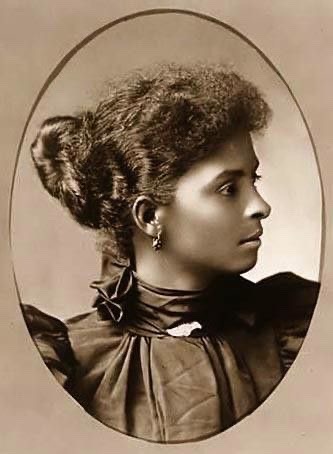
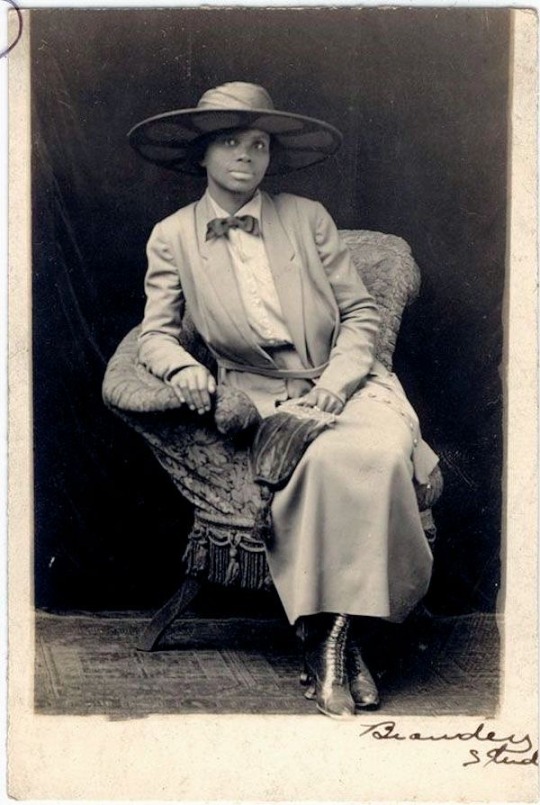
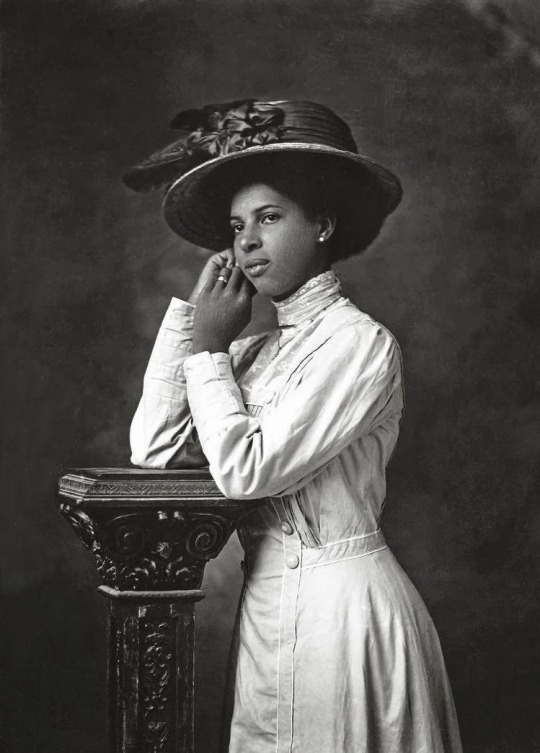



Historical African American Photos Black Women in Victorian Era 1800's Real People Real Lives


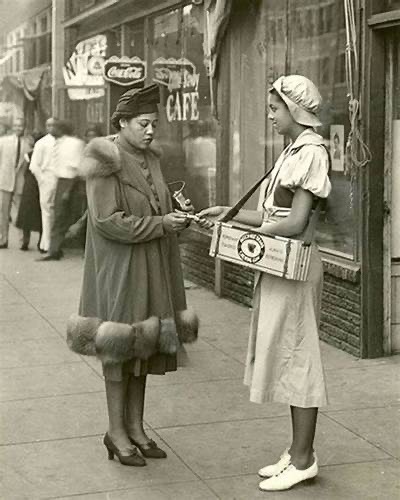

5K notes
·
View notes
Text
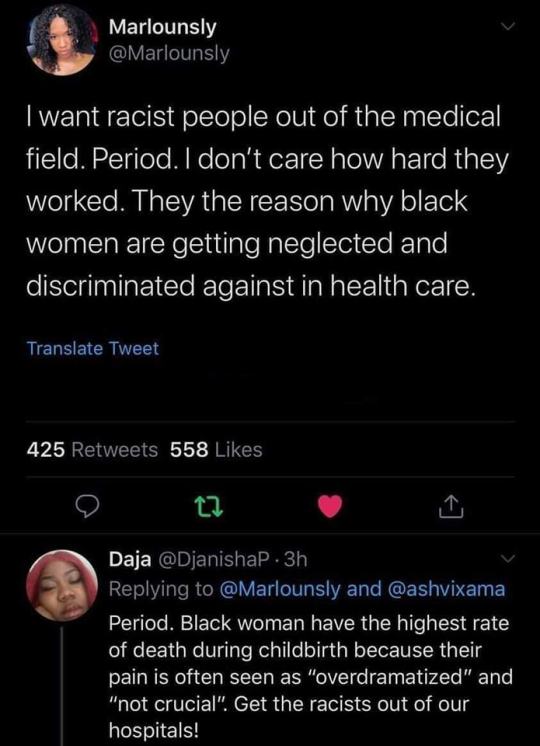
👏🏼👏🏼👏🏼👏🏼👏🏼👏🏼👏🏼👏🏼👏🏼
5K notes
·
View notes
Text
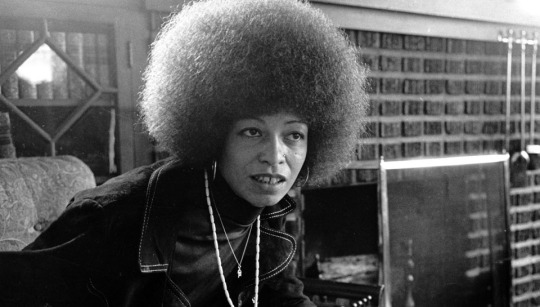
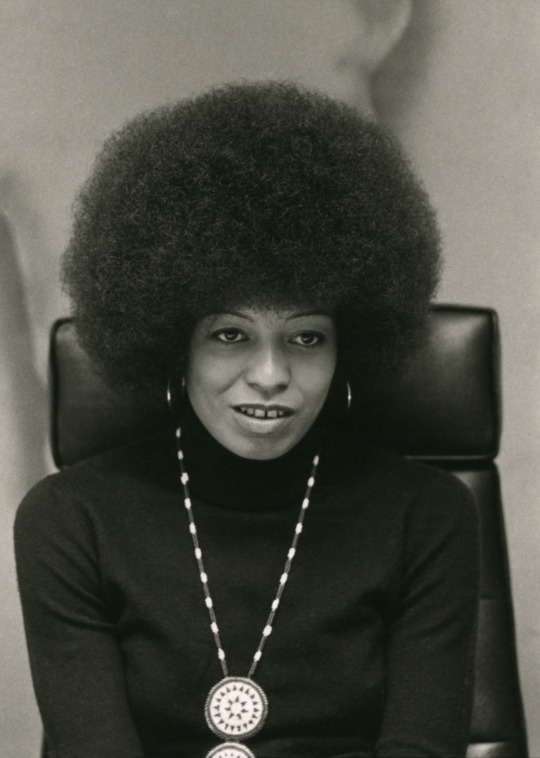



January 26, 1944 activist and philosopher, Angela Davis, was born!
#angela davis#black history#black women#blackhistory#civil rights#black panthers#black unity#unity#black tumblr
438 notes
·
View notes
Photo

On March 2, 1955, Claudette Colvin refused to give up her seat to a white woman on a city bus in Montgomery, Alabama.
As police officers dragged her from the bus, she shouted again, and again, “It’s my constitutional right.” She was jailed and charged with violating segregation laws, disturbing the peace and assaulting a police officer. She pleaded not guilty, but was convicted.
Colvin’s act of protest happened 9 months before Rosa Parks famously sparked the Montgomery Bus Boycotts, but Colvin’s age and lack of experience in the civil rights movement rendered her act of bravery and defiance all but forgotten in the telling of civil-rights history.
𝗪𝗲 𝗰𝗮𝗻𝗻𝗼𝘁 𝗹𝗶𝘃𝗲 𝘂𝗽 𝘁𝗼 𝗼𝘂𝗿 𝗴𝗿𝗲𝗮𝘁𝗲𝘀𝘁 𝗶𝗱𝗲𝗮𝗹𝘀 𝘄𝗶𝘁𝗵𝗼𝘂𝘁 𝗰𝗼𝗻𝗳𝗿𝗼𝗻𝘁𝗶𝗻𝗴 𝘁𝗵𝗲 𝗿𝗲𝗮𝗹𝗶𝘁𝗶𝗲𝘀 𝗼𝗳 𝗼𝘂𝗿 𝗵𝗶𝘀𝘁𝗼𝗿𝘆.
#BlackHistory#BlackHistoryIsAmericanHistory#BlackHistoryMatters#CivilRights#civilrightsmovement#montgomerybusboycott#MontgomeryAlabama
1K notes
·
View notes
Text

#black rose#black is beautiful#blackhistory#onelove#melanin#love conquers all#black love#black girl magic#black beauty#black hair#self love
162 notes
·
View notes
Text

Harlem Dance Academy
538 notes
·
View notes
Text

#blacklove#love#blackexcellence#blackgirlmagic#black#melanin#blacklivesmatter#blackwomen#blackpower#blackhistory#blackisbeautiful
289 notes
·
View notes
Text

#malcolmx#malcomx#africanamerican#blacklivesmatter#blackpanther#love#blackexcellence#blackpower#blackbusiness#blackhistory
611 notes
·
View notes
Text

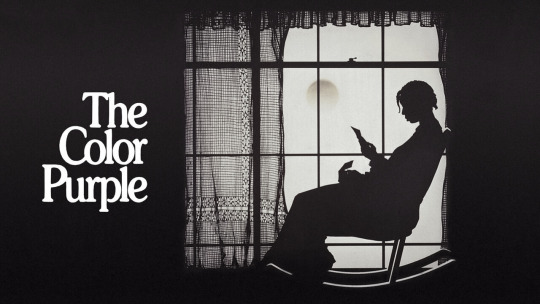

Today In History
Alice Walker, poet and activist, received the “Pulitzer Prize” in fiction for The Color Purple on this date April 18, 1983.
Walker’s novels, short stories, and poems are noted for their insightful treatment of African American culture.
The Color Purple, an epistolary novel, it depicts the growing up and self-realization of an African American woman between 1909 and 1947 in a town in Georgia.
The book was adapted into a film produced by Quincy Jones and directed by Steven Spielberg in 1985. A musical version produced by Oprah Winfrey and Quincy Jones premiered in 2004.
And in 2023 The Color Purple musical was turned into a film produced by Oprah Winfrey, Quincy Jones, Steven Spielberg and Scott Sanders.
CARTER™️ Magazine
#carter magazine#carter#historyandhiphop365#wherehistoryandhiphopmeet#history#cartermagazine#today in history#staywoke#blackhistory#blackhistorymonth#the color purple
20 notes
·
View notes
Text
The Horrors of Lynching: Photographs and Postcards
Note to readers: This post contains graphic and disturbing images.
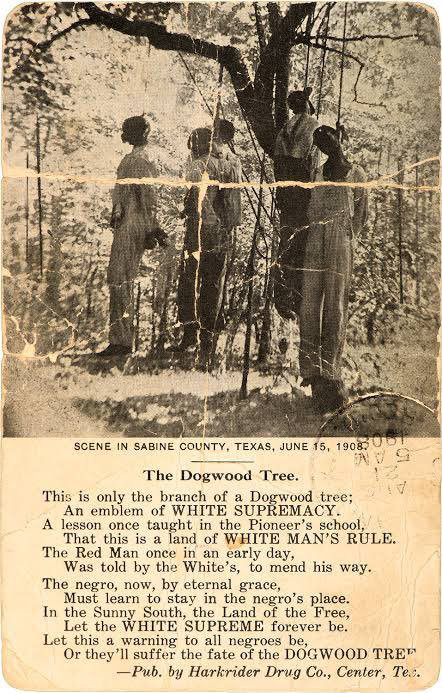
During the late 19th and early 20th century, thousands of photographs and postcards of Black Americans killed by white mobs in racist terror lynchings were collected, traded and sent through the U.S. postal service.
The postcards and photographs, depicting gruesome images of the bodies of Black men, women and children who had been tied to trees, mutilated, tortured, shot and burned alive by white mobs, were often distributed as souvenirs and saved as mementos in family albums and stored away in attics for safekeeping.
The lynching photographs often captured the bodies of the murdered Black Americans and the hundreds of white people — including children — who gathered to witness the public spectacle of lynchings. According to historians, in more than half of these photos and postcards, white people were shown smiling and celebrating the spectacles.
WHITE PEOPLE MONETIZED THE MURDER OF BLACK PEOPLE
Lynching photographs and postcards were shrewdly distributed — often for profit — across communities by hand and through the U.S. mail. They were often sold for as little as a quarter, which would be worth about $3.46 today.
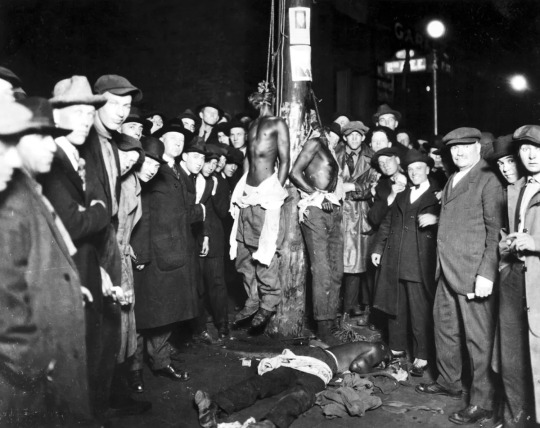
Source: wordinblack.com
Translated by Long Live Blackness by Shaneyra Thompson
•••
Los horrores de los linchamientos: fotografías y postales
Nota para los lectores: Esta publicación contiene imágenes gráficas e inquietantes.
Descripción de primera imagen: [Cinco afroamericanos fueron colgados de un cornejo en el condado de Sabine, Texas, en 1908 como "una advertencia para todos los negros".]
Traducción de la postal:
Esta es sólo la rama de un árbol de Cornejo;
Un emblema de la SUPREMACIA BLANCA.
Una lección que una vez se enseñó en la escuela de los Pioneros:
que esta es una tierra de GOBIERNO DEL HOMBRE BLANCO.
Una vez, temprano en la mañana, los blancos le dijeron al Hombre Rojo que enmendara su camino.
El negro, ahora, por gracia eterna, debe aprender a permanecer en el lugar del negro.
En el Soleado Sur, la Tierra de los Libres, que la SUPREMACÍA BLANCA sea para siempre.
Que esto sea una advertencia para todos los negros, o sufrirán el destino del árbol de Cornejo.
A finales del siglo XIX y principios del siglo XX, se recopilaron, comercializaron y enviaron a través del servicio postal de Estados Unidos miles de fotografías y postales de estadounidenses negros asesinados por turbas blancas en linchamientos terroristas racistas.
Las postales y fotografías, que mostraban imágenes espantosas de los cuerpos de hombres, mujeres y niños negros que habían sido atados a árboles, mutilados, torturados, fusilados y quemados vivos por turbas blancas, a menudo se distribuían como souvenirs y se guardaban como recuerdos en álbumes familiares.
Las fotografías de los linchamientos a menudo capturaban los cuerpos de los estadounidenses negros asesinados y los cientos de personas blancas (incluyendo niños) que se reunían para presenciar el espectáculo público de los linchamientos. Según los historiadores, en más de la mitad de estas fotografías y postales, se mostraba a personas blancas sonriendo y celebrando los espectáculos.
LOS BLANCOS MONETIZARON EL ASESINATO DE LOS NEGROS
Se distribuyeron astutamente fotografías y postales de linchamientos (a menudo con fines de lucro) entre las comunidades, en mano y por correo postal. A menudo se vendían por tan solo veinticinco centavos, lo que hoy valdría unos 3.46 dólares.
Descripción de segunda imagen: [Una postal de un linchamiento en Duluth. 15 de Junio, 1920.]
Fuente: wordinblack.com
Traducido por Long Live Blackness by Shaneyra Thompson
#blacklivesmatter#blacklivesalwaysmatter#english#spanish#blackhistory#history#lynching#black history is american history#historyfacts#black history is world history#black history matters#black history is everybody's history#black history 2023#black history#black history month#african history#blackhistorymonth#blackpeoplematter#knowyourhistory#blackhistoryyear#blackownedandoperated#historia#slavery#esclavitud#español#black tumblr#share#read#follow#blackbloggers
325 notes
·
View notes
Text

#1942#september5#omaha nebraska#united states navy#Charles Jackson French#hero#great courage#bravery#swamallnight6to8hours#15woundedsoldiers#pulledaraftofsoldiers#ocean#sharks#strongswimmer#blackhistory#black man#us naval history#USSGregoryhit#military history#military men#strongstomach
195 notes
·
View notes
Text

Here’s an uncomfortable American history fact that you probably weren’t taught in school, and is probably being banned from being taught in GOP states.
It took a Black President in 2016 to apologize for the actions of a white president 80 years prior. Think about that, and the legacy of systemic racism in America.
Black History Month Day 22
@qasimrashid Instagram
1K notes
·
View notes